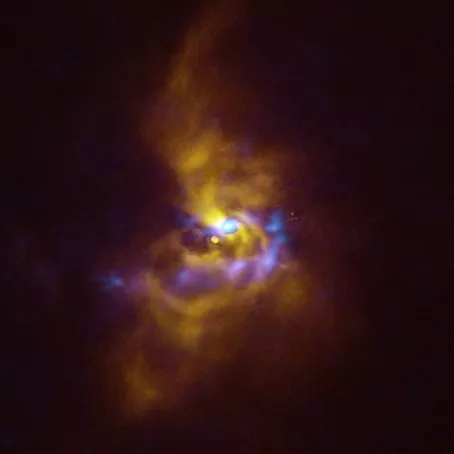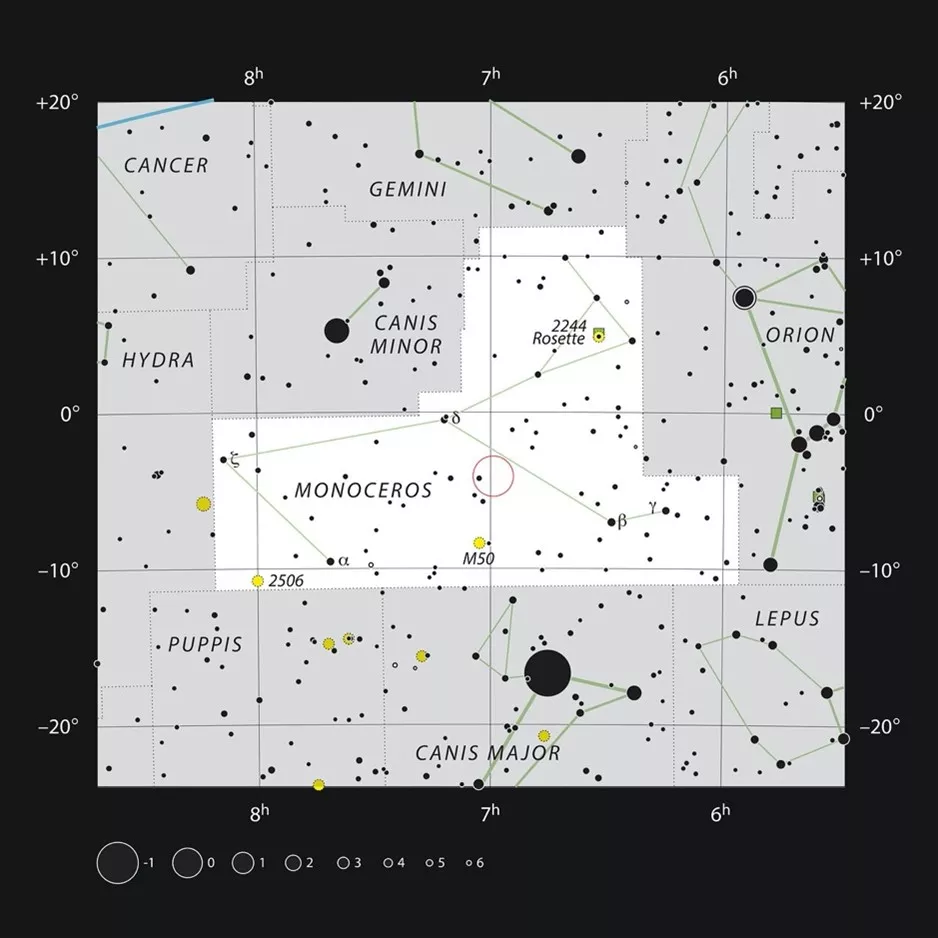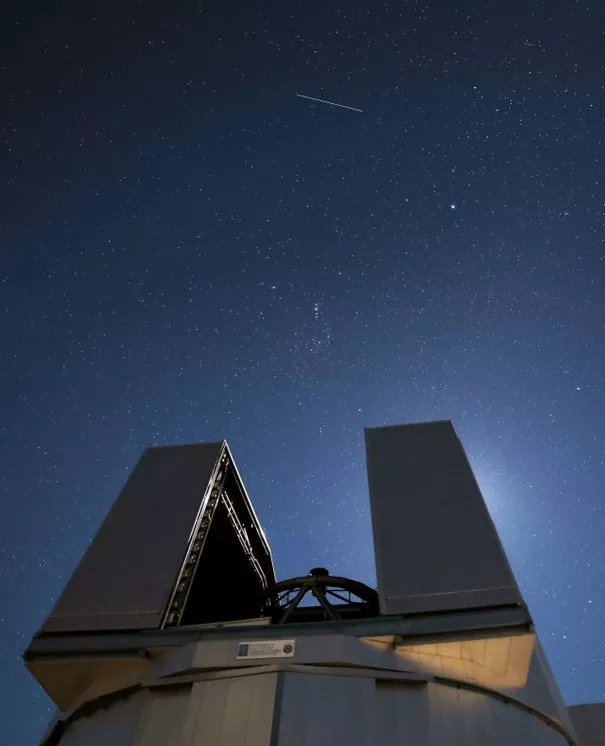In an international cooperation with the involvement of Ágnes Kóspál, a scientific advisor at the Konkoly Thege Miklós Astronomical Institute of the ELKH Research Centre for Astronomy and Earth Sciences (CSFK CSI), researchers have detected large dusty clumps, close to the star V960 Mon, using the European Southern Observatory's (ESO) Very Large Telescope (VLT) and the ALMA radio antenna array (Atacama Large Millimeter/submillimeter Array). The new discovery is particularly significant as it marks the very first detection of clumps around a young star that could collapse to create giant planets. The paper presenting the results was published in The Astrophysical Journal Letters.
The research is based on a spectacular new image released by ESO that also gives us clues about how planets as massive as Jupiter could form. The mesmerizing picture obtained with the Spectro-Polarimetric High-contrast Exoplanet REsearch (SPHERE) instrument on ESO’s VLT features fascinating detail of the material around the star V960 Mon. This young star is located over 5000 light-years away from Earth in the constellation Monoceros (meaning one-horned) and attracted astronomers’ attention when it suddenly increased its brightness more than twenty times in 2014. SPHERE observations taken shortly after the onset of this brightness ‘outburst’ revealed that the material orbiting V960 Mon is assembling together in a series of intricate spiral arms extending over distances bigger than the entire Solar System.
V960 Mon was part of the survey led by Ágnes Kóspál, in which ALMA measurements were used to determine that the disks around young eruptive stars are typically smaller but more massive than those around non-eruptive young stars that do not exhibit eruptions. The results indicated that most of these disks could be gravitationally unstable, meaning the material orbiting the star may clump together, and then the clumps could collapse. At first glance, however, such clumping was not apparent in the ALMA images.
The discovery of the spiral arms then motivated astronomers, led by Philipp Weber (University of Santiago, Chile), to re-analyze the earlier ALMA observations. The VLT observations probe the surface of the dusty material around the star, while ALMA can peer deeper into its structure. Through a thorough reprocessing of the ALMA measurements, it became apparent that the spiral arms around V960 Mon are undergoing fragmentation, resulting in the formation of clumps with masses akin to those of planets. This discovery is particularly significant as it marks the very first detection of clumps around a young star that have the potential to give rise to giant planets.
Astronomers believe that giant planets form either by ‘core accretion’, when dust grains come together, or by ‘gravitational instability’, when large fragments of the material around a star contract and collapse. While researchers have previously found evidence for the first of these scenarios, support for the latter has been scant. The recent observations confirm for the first time that gravitational instability can happen at planetary scales.
ESO instruments will help astronomers unveil more details of this captivating planetary system in the making, and ESO’s Extremely Large Telescope (ELT) will play a key role. Currently under construction in Chile’s Atacama Desert, the ELT will enable the exploration of the chemical complexity surrounding these clumps, helping researchers find out more about the composition of the material from which potential planets are forming.
Ágnes Kóspál's scientific work is also supported by the European Research Council (ERC). The study involved researchers from institutes in Chile, the US, Italy, Hungary, and Taiwan.

Image 1: At the center of this image is the young star V960 Mon, located over 5000 light-years away in the constellation Monoceros. Dusty material with potential to form planets surrounds the star. Observations obtained using the SPHERE instrument on ESO’s VLT, represented in yellow in this image, show that the dusty material orbiting the young star is assembling together in a series of intricate spiral arms extending to distances greater than the entire Solar System. Meanwhile, the blue regions represent data obtained with the ALMA radio antenna array. The ALMA data peer deeper into the structure of the spiral arms, revealing large dusty clumps that could contract and collapse to form giant planets roughly the size of Jupiter via a process known as “gravitational instability”.
(Credit: ESO/ALMA (ESO/NAOJ/NRAO)/Weber et al.)

Figure 1: This chart shows the position of the star V960 Mon in the constellation Monoceros (meaning one-horned).
(Credit: ESO, IAU and Sky & Telescope)

Image 2: One of the Very Large Telescope Unit Telescopes on which the SPHERE instrument is located.
(Credit: R. Wesson/ESO)

Image 3: Aerial view of the ALMA radio antenna array
(Credit: ESO/Angelos Tsaousis)
Source: eso.org